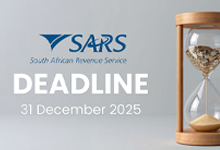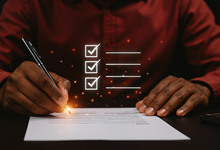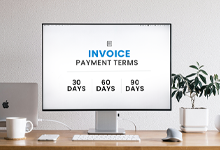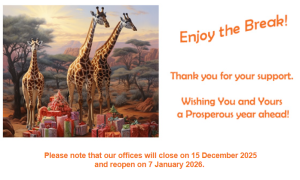Your Tax Deadlines for December 2025
/in News/by ADMIN
- 05 December – PAYE submissions and payments
- 24 December – VAT manual submissions and payments
- 30 December – Excise duty payments
- 31 December – VAT electronic submissions and payments & CIT Provisional Tax payments where applicable.
NPO? NGO? NPC? PBO? What’s the Difference Anyway?
/in News/by ADMIN
“A rich man without charity is a rogue; and perhaps it would be no difficult matter to prove that he is also a fool.” (Henry Fielding, English writer and judge)
Across the country, tens of thousands of groups run feeding schemes, environmental projects, schools, clinics, and training centres, often built on passion rather than profit.
But while “NGO” is the word most people use, it’s not actually a legal term in South Africa. Entrepreneurs who fund or collaborate with non-profits need to know what each term really means, because it affects compliance, governance, and whether your donation qualifies for a tax deduction.
Alphabet soup: What does it all mean?
| NGO (Non-Governmental Organisation)
NGO is a broad, informal term used for any group doing social good outside of government. It could be a community group, a youth initiative, or a local charity. There’s no single registration for an “NGO” in South Africa and literally anyone can use the label. |
NPC (Non-Profit Company)
Some charitable organisations register as NPCs with the Companies and Intellectual Property Commission (CIPC). This suits organisations that want a more formal company structure, complete with directors and a Memorandum of Incorporation. |
| NPO (Non-Profit Organisation)
An NPO is a specific legal status created by the Non-Profit Organisations Act. You need to apply to the Department of Social Development (DSD) with your constitution or founding document. Once approved, you get an official NPO number and a certificate that opens doors which funders, corporates and even banks. Non-Profit Companies (see below) can also apply to be NPOs, in which case both sets of rules apply. |
PBO (Public Benefit Organisation)
Both NPOs and NPCs must apply to SARS to become PBOs if they want to unlock the tax benefits available to charitable organisations (more info below). |
What’s the point of registering?
Many groups, particularly small ones, will run perfectly well without registering. Registering does, however, bring a number of real advantages.
- It shows funders and partners that the organisation is credible and accountable.
- It lets the operators open a business bank account in the organisation’s name.
- It qualifies the organisation for funding from government, corporates, and the National Lotteries Commission.
- It’s the first step toward tax exemption.
Any entrepreneurs working with or donating to a cause should always ask for proof of registration as an NPO or NPC.
When does “non-profit” mean tax-free?
Here’s where many people get caught out. Just because an organisation is registered as an NPO doesn’t mean they are automatically exempt from tax. To enjoy tax benefits, like exemption from income tax and giving donors section 18A certificates, the organisation must also apply to SARS for Public Benefit Organisation (PBO) status. (Being granted Section 18A status requires a separate approval on top of PBO status.)
That approval comes with conditions: funds must only be used for approved public-benefit activities, and annual returns must be filed. PBO status will always make an organisation more attractive to donors because their contributions can now become tax-deductible and exempt from donations tax.
How do finances and reporting work?
| NPOs
Must keep proper accounting records and submit annual reports to the DSD. Within six months of their year-end, they must prepare a statement of income and expenditure, a balance sheet, and an accounting officer’s report confirming compliance. Must have a committee or board. These individuals carry fiduciary responsibility, meaning they are directly accountable for how the funds are used. |
NPCs
Follow company law and must lodge annual returns with CIPC. An NPC that is also registered as an NPO will also have to comply with the requirements for an NPO. Must appoint at least three directors. These individuals carry fiduciary responsibility, meaning they are directly accountable for how the funds are used. |
While this might sound like a lot of admin, it protects both sides. Donors get transparency, and the organisation builds a track record for future funding.
Three key questions
Anyone partnering with a non-profit should always review its governance set-up before committing resources and be able to answer the following questions:
- Is it registered with DSD or CIPC or both?
- Does it have PBO approval from SARS?
- Are its financials current and submitted?
If the answer is “yes” to all three, then you are working with an organisation that’s not just doing good – it’s doing good in the right way.
Outstanding Tax Debt? SARS’ Expedited Debt Compromise Ends 31 December 2025
/in News/by ADMIN
“The South African Revenue Service is always ready to assist taxpayers to fulfil their legal obligations.” (SARS)
Acknowledging that taxpayers often find it difficult to settle tax debt due to financial challenges, SARS has launched an expedited debt compromise process to help eligible taxpayers settle outstanding tax debts swiftly and on more favourable terms.
The normal debt compromise process remains available to all taxpayers, and learnings from this expedited process will be used to enhance the broader system.
What is a debt compromise?
A compromise is a written agreement between SARS and a taxpayer in which SARS agrees to accept a reduced amount as full and final settlement of a tax debt.
Once the taxpayer pays the agreed amount and complies with the terms, SARS waives the balance of the debt. However, if the taxpayer defaults or fails to remain compliant, SARS can reinstate the full debt.
Expedited debt compromise eligibility criteria
- The process applies to non-disputed tax debts older than 12 months.
- You must be a client of a registered tax practitioner.
- Your tax returns must be up to date (even if payment is outstanding).
- The following exclusions apply: entities subject to specific legal processes (such as liquidations, estates, and business rescue cases), companies that are deregistered, cases subject to criminal investigation and audit, as well as cases within the write-off process, taxpayers who have had a compromise in the past three years, and taxpayers who have the means to pay but refuse to do so.
Submission requirements
Taxpayers applying for the expedited tax debt compromise process must provide comprehensive relevant supporting documentation with their applications, which must be submitted by 31 December 2025.
These documents include:
- Latest Annual Financial Statements (not older than one year)
- Last six months’ bank statements
- Cashflow forecast for 12 months
- List of Assets and Liabilities at market value
- Debtors’ age analysis
- Details of any connected persons
- Details of assets disposed of in the last three years
- Disclosure of future or contingent interests in assets
- Details of assets under the taxpayer’s control (including through trusts)
- Current and projected income for the next three years
- Application letter with clear motivation, including the proposed settlement offer amount, and the source of funds to pay the offered amount
- Collection Information Statement (CIS) request with reasons and proof to compromise the debt.
It is important that disclosures are accurate – if they aren’t SARS might not even consider the application.
SARS has committed to resolving qualifying applications within four weeks, using dedicated teams and enhanced workflow management.
Approved compromise settlements may be paid either in full (once-off payment), or in instalments as agreed by SARS.
Act now to avoid escalation
From 1 January 2026, SARS will escalate enforcement against taxpayers who remain non-compliant and have not applied for compromise. Such enforcement may include civil judgments against the taxpayer, writs of execution, collection of money from third parties such as banks, attachment of taxpayer assets, holding directors or members personally liable for the debt, sequestration or liquidation of the taxpayer, or preservation of assets against the debt. To support this intensified enforcement, SARS is engaging 260 legal collectors and 30 legal practitioners.
If you are struggling with long-overdue tax debt, this expedited tax debt compromise process may offer your best chance to finally resolve it – on favourable terms, nogal.
R&R for Better Business Performance? Here’s how…
/in News/by ADMIN
“Sometimes the most productive thing you can do is relax.” (Mark Black)
By prioritising rest and relaxation (R&R) over the holidays, businesses can cultivate a healthier, more productive, and more resilient workforce – which ultimately leads to sustained high performance.
Here’s why R&R matters for your business performance… And how to help your team make the most of their December break.
6 ways R&R boosts business performance
- Prevents costly burnout. Chronic stress leads to burnout, which dramatically decreases performance and increases employee turnover. Regular rest maintains sustainable energy and enthusiasm, protecting your investment in talent.
- Unlocks creativity and innovation. Downtime allows your subconscious mind to process information and make new connections. Those breakthrough ideas rarely happen amid non-stop meetings and deadlines but rather emerge when your brain has space to wander.
- Sharpens decision-making. Fatigue impairs cognitive function. Rested leaders and employees analyse situations more clearly, weigh options more effectively, and make sound strategic decisions that move the business forward.
- Increases productivity and focus. Paradoxically, working non-stop decreases productivity. Taking breaks recharges the brain, improving concentration and efficiency. Research shows that the busier people are, the less creative they become.
- Enhances problem-solving. Stepping away from a challenge provides fresh perspective. You’ll often return with quicker, more effective solutions than if you’d powered through.
- Improves team communication. When people are tired or stressed, communication suffers. Rest enhances the ability to listen attentively, express ideas clearly, and avoid conflicts caused by fatigue-driven reactions.
How to maximise your team’s December leave
With the December holidays in a few days, now is the ideal time to encourage your team to make the most of the leave days.
A good starting point is to ensure your team knows that taking leave is essential: some people need permission to step away from their responsibilities.
Also encourage complete disconnection during leave days, reminding your team members that effective rest means genuinely disengaging from work and doing whatever their heart desires, be that hiking the Otter Trail, spending time with the family or embarking on a DIY project.
To reduce anxiety about taking time off and allow everyone to truly switch off when they’re on leave, you need to plan ahead. Work with your team now to establish clear out-of-office dates, handover protocols, and emergency contacts. And ensure projects are covered and clients are informed long before the holidays begin.
Finally, remember to lead by example – when managers and business owners take their own breaks and visibly disconnect, it gives everyone else permission to do the same.
Rest well, start well
Rest is not an indulgence, it’s a strategic investment in your business’ long-term success.
A well-rested team will return sharper, more creative, and ready to tackle challenges with renewed energy in 2026.
Your Tax Deadlines for November 2025
/in News/by ADMIN
- 07 November – PAYE submissions and payments
- 25 November – VAT manual submissions and payments
- 27 November – Excise duty payments
- 28 November – VAT electronic submissions and payments, & CIT Provisional Tax payments where applicable.
Time Is Money: 8 Timesaving Tips Every Business Leader Should Utilise
/in News/by ADMIN
“The key is not to prioritise what’s on your schedule, but to schedule your priorities.” (Stephen R. Covey, The 7 Habits of Highly Effective People)
In business it’s too easy for an entrepreneur or business leader to mistake being busy for being effective. Working long hours with back-to-back meetings can look like productivity – but without clarity and boundaries, the important work may not actually be getting done.
According to a study conducted by McKinsey, 61% of senior executives believe that at least half of the time they spend making decisions is unproductive. So how can you stop this happening to you?
Time-saving strategies are an essential tool for sustainable modern leadership. Streamlining processes, delegating effectively, and embracing automation can transform your day. Done right, these tactics free up energy for strategic thinking, innovation, and decision-making – all of which can lead to greater growth in your business. Here are some evidence-based tips every business leader should employ to better utilise their time.
1. Prioritise ruthlessly
One of the most effective ways to save time is by focusing only on tasks that deliver real impact. The Eisenhower Matrix (dividing tasks into urgent vs. important) remains a powerful tool. Many leaders fall into the trap of handling urgent but low-value work, rather than carving out time for strategic priorities.
The fix? Review your to-do list daily and cut or delegate anything that doesn’t directly move the business forward. Treat your time as an investment portfolio and put more into the high-return opportunities.
2. Delegate with trust
Effective delegation is a skill, not just because it frees up your time, but also because it empowers your team. Too many leaders hoard responsibilities out of habit or fear that standards won’t be met. But this can bottleneck workflows and burn time on details that others are capable of handling.
You should be clearly defining expectations, providing resources, and then stepping back. By learning to fully trust your team you free yourself up for higher-level thinking and decision-making. Just as importantly, you give staff room to grow, in the process increasing employee engagement and retention.
3. The algorithm is your friend
Everyone’s talking about AI these days, and with good reason. Technology can be a business leader’s greatest ally. From scheduling tools to delivering automated reporting, letting technology take care of the smaller tasks can strip hours of repetitive labour from your week.
The upfront effort and cost of setting up automation pays dividends quickly. According to a Deloitte survey, businesses using automation in finance and operations reported time savings of between 60% and 80% in some high volume, transactional finance processes. As your accountant, we can help you adjust budgets to cater for tech upgrades and installations, and the adjusted workflows that will surely follow. Leaders who resist these tools risk drowning in avoidable admin.
4. Guard your calendar
Your calendar is a reflection of your priorities. Yet many leaders allow it to be hijacked by endless meetings. A practical fix is to implement “meeting-free zones” (blocks of time reserved exclusively for deep work).
Another technique is the “two-pizza rule” made famous by Jeff Bezos: never hold a meeting if it requires more than two pizzas to feed the attendees. Meetings with fewer staff and clear agendas reduce wasted time and force clarity.
5. Communicate your way
These days, business leaders are blessed with communication options. Tools like project management platforms, shared documents, and messaging systems mean you can allow communication to happen without the need for meetings or real-time interruptions. Allowing people to react to incoming information when they have space in their day lowers wasted time and increases focus. This helps everyone in the business, including you, to get more done.
6. Build decision-making frameworks
Your job as a business leader is essentially to make decisions. The longer it takes you to make a decision, the more momentum is impeded. Structured decision-making frameworks (such as weighted scoring models) can help you speed up evaluations, reduce second-guessing and come to conclusions faster. This doesn’t just save you time, it also keeps others on track.
7. Invest in personal efficiency
Leadership productivity is also about discipline. By simply changing some of the habits you’ve developed over a lifetime, you could immediately become more efficient. For example, you could answer your emails and phone notifications in batches instead of interrupting work to answer them as the notification comes in.
Introducing new habits and changing old ones will require daily diligence and repetition. Initially, it may seem draining, but over time you’ll find you are saving hours you can put to better use elsewhere.
8. Time as a strategic asset
Leaders who learn to protect and optimise their schedules are the ones who build organisations that are sharper, faster, and more resilient.
By prioritising ruthlessly, delegating effectively, automating smartly, and protecting your calendar, you can transform time from a constraint into a competitive advantage.
Your Year-End Business Checklist: 10 Essential Tasks
/in News/by ADMIN
“Christmas is a season not only of rejoicing, but of reflection.” (Winston Churchill)
Can you believe November is upon us already? But instead of panicking about Christmas presents, it’s time to get strategic. The end of the year presents a crucial opportunity to settle outstanding matters, measure your business’s progress, and establish a strong foundation for a prosperous new year.
This checklist can help you achieve this before December rolls around.
Your 10-step checklist
- Back up your data: Back up essential files including accounting documents, client information, and emails. It’s a good idea to keep at least one copy on the cloud and another copy offline on an external hard drive in a secure location.
- Stay on top of employee matters: Update all employee information as well as employee access and passwords to software programs and computer systems. Conduct constructive performance appraisals or feedback sessions and share rewards and recognition for notable contributions.
- Connect with your customers: Send festive season wishes and details of your holiday operating hours, and invite your customers to give feedback about your company. Add an out-of-office notification on all your communication channels with specific dates as well as an emergency number.
- Understand your financial position: Management accounts or reports like the income statement, balance sheet, and cash flow statement provide insight into the expense patterns, profit margins, revenue trends and financial health of your business, enabling informed decisions.
- Understand your tax position: Make sure you know your various tax obligations, liabilities and deadlines, and any tax deductions and credits you may qualify for before year-end.
- Review marketing and sales efforts: Evaluate which strategies worked, which didn’t, and why.
- Collect outstanding invoices: Get your December invoices out as early as possible and don’t let unpaid invoices carry over into the new year. Follow up on overdue payments now to boost cash flow and start fresh in January.
- Verify supplier information: Update your supplier database by confirming contact details, while also evaluating supplier relationships and negotiating better terms.
- Take stock: Take a physical inventory of all equipment, supplies and stock to better meet customer demand, identify any discrepancies in your records, prepare tax returns and insurance proposals, and effect necessary repairs, maintenance and upgrades. Set a specific day for the count, organise the space, record quantities, and calculate total value.
- Audit your digital presence: Test every link on your website, check your contact forms, review your social media profiles and call your business number to ensure everything works.
Start 2026 off on the right foot
Once you’ve ended the year right, you can start focusing on what’s to come. Use your financial statements, marketing and sales reviews, customer feedback and team input to evaluate progress on last year’s goals and to set new ones.
Create a high-level action plan for each goal to guide your progress throughout the coming year.
Surviving Trust Tax Season 2025 – And Beyond
/in News/by ADMIN
“Trustees remain accountable for all tax matters of a trust, regardless of the economic activity of the trust.” (SARS)
The official trust filing season for the 2025 year of assessment is now open for both provisional and non-provisional taxpayers – and SARS has issued stern warnings to trustees to fulfil their tax obligations.
Who must file trust tax returns?
A trust is included under the definition of a “person” in terms of the ITA (Income Tax Act no.58 of 1962) and is therefore regarded as a taxpayer.
All South African trusts, including resident and non-resident trusts, that are registered for income tax, must file a tax return annually, even if the trust is not economically active.
A trustee is the representative taxpayer of a trust. Trustees or representatives must register the trust for income tax and file the required tax returns annually. Alternatively, a registered tax practitioner can be appointed as the representative taxpayer.
What must be done?
Taking into account recent changes to the legislation, trustees must submit their returns for the 2025 year of assessment and file the mandatory supporting documents listed further below.
Recent legislative changes
- The “flow-through” principle is now limited to resident beneficiaries, so all amounts vested to non-resident beneficiaries are taxable in the hands of the trust. This also affects the submission requirements for provisional tax (IRP6).
- Foreign tax credits for taxes paid on income or capital gains earned in a foreign jurisdiction can now be used to prevent double taxation.
- From the 2025 tax year onwards, unused foreign tax credits will be carried forward automatically to the subsequent years of assessment, up to a maximum of six years.
- The Section 12H Learnership Agreement is extended to 31 March 2027.
- The definition of a trust is updated to include collective investment scheme portfolios.
- SARS has issued new rules on how losses relating to distributions are limited under section 25B.
Return submissions
The final deadline for the submission of provisional and non-provisional Trust Income Tax Returns (ITR12Ts) is 19 January 2026.
Mandatory supporting documents
| Required Documents | Details |
|---|---|
| Trust instrument | Latest deed or will |
| Certain transactions and financial flows | Income sources and distribution of income; proof of any tax credits |
| Financial information | Financial Statements/Annual Administration Account |
| Parties connected to a trust | Beneficial-ownership document, including detail per entity listed |
| Other documents | Letters of Authority and Minutes and Resolutions of trustee meetings |
| Foreign trust document (if applicable) | Controlled Foreign Company (IT10) |
| Mining document (if applicable) | Mining Schedule A and B |
Source: SARS
File on time!
Trustees and administrators should take note that all the return submissions and supporting documents are due by 19 January 2026 – just days into the new year.
Submitting within the deadlines is necessary to comply with SARS regulations. Late submissions can lead to administrative penalties, interest charges, and additional steps.
What else must be done?
Because a trust is also a provisional taxpayer, trustees should be aware that a trust is further required to submit provisional tax returns (IRP6) twice a year in August and February.
In addition, trustees are also required to submit an IT3(t) third-party data return that provides details of amounts vested to beneficiaries.
Finally, all income derived from a trust must be declared by any resident beneficiaries of trusts in their own income tax returns.
Looking ahead: Key tax dates for trusts
- 19 January 2026: Final deadline for provisional and non-provisional trust tax return (ITR12T) submissions.
- 28 February 2026: Second provisional tax payment for the 2026 assessment year.
- 31 August 2026: First provisional tax payment for the 2027 assessment year.
- September 2026 (date TBC): Opening date for Income Tax Returns for Trusts (ITR12T) submissions for 2026.
- 30 September 2026: Deadline for IT3(t) return submissions for trusts which declare amounts vested to beneficiaries’ income.
- 30 September 2026: Top-up provisional tax payment for the 2027 assessment year.
Consequences of non-compliance
SARS takes a zero-tolerance approach to taxpayers who do not register for the applicable tax, file tax returns, declare income accurately, or pay their tax debt.
Non-compliance with these obligations is a criminal offence and will attract penalties and interest.
How Your Payment Terms Could be Damaging Your Business
/in News/by ADMIN
“Beware of little expenses; a small leak will sink a great ship.” (Benjamin Franklin)
| Extending 30-, 60- or 90-day payment terms may seem like a simple trick to help your sales teams convert sales, smooth negotiations and boost customer service. What you may not recognise, though, is that those terms are not neutral commercial niceties – they are a form of credit.
When your business supplies goods or services today and accepts payment weeks or months later, it has effectively provided an unsecured loan to the buyer. That “invisible loan” has measurable costs: higher working-capital needs, lost interest income, distorted pricing decisions and elevated credit risk. When you sell on extended terms, “accounts receivable” grows and cash on the balance sheet shrinks until the buyer pays. That increases days-sales-outstanding (DSO) and raises the working-capital requirement. If you borrow to cover the gap (common for seasonal businesses or those with tight margins) the interest paid on that borrowing is a direct cost of the terms you offered. Even when you don’t borrow, the opportunity cost remains: cash not received cannot be used to reduce debt, invest in higher-return projects, or fund inventory when demand spikes. Over time the cumulative burden of routinely extended terms reduces agility and margins. Unfortunately, many clients demand extended payment terms, and your competition may be prepared to accede to their wishes. So how do you ensure you keep the business without going out of business yourself? 1. Price the financeTreat longer payment terms as a priced service. Build a transparent financing fee into orders that use 60- or 90-day terms, or publish two price lists: a net price for immediate payment and a financed price for deferred settlement. Customers accept explicit fees more readily than hidden margin increases, and your finance team can model return on capital precisely. 2. Offer structured early-payment incentivesInstead of unconditional long payment terms, offer predictable early-payment discounts or dynamic discounting tied to actual payment date. A 0.5–1.0% discount for payment within 7–10 days often costs less than the buyer’s short-term borrowing and converts receivables into near-cash for you. 3. Underwrite and limit credit formallyMove from ad-hoc allowances to formal credit applications and limits. Require a minimum credit assessment for extended terms, set credit lines tied to payment performance, and review limits at set intervals. For new or higher-risk customers, insist on shorter terms or staged delivery until a track record is established. 4. Design payment terms as part of commercial dealsMake terms a negotiation item linked to value. Trade extended terms for commitments: volume guarantees, longer contract terms, staged milestones, or partial upfront payment. Where applicable, split deals into an upfront deposit and a deferred balance tied to delivery or performance to reduce unsecured exposure. 5. Use technology and supply-chain finance optionsMake payment easier with accurate, timely electronic invoicing, one-click payment links, and multiple payment methods. For larger B2B (business-to-business) accounts, consider invoice finance or supply-chain finance platforms. They enable buyers to settle invoices early and suppliers to access cash immediately, typically with transparent and lower financing costs than traditional receivables. 6. Make the invisible visible
It’s essential to stop treating DSO as a passive metric and make extended terms a line item in cash-flow forecasting. Your accountant (that’s us!) can help you report the cost of terms monthly: financing cost, incremental bad-debt risk, and the foregone investment return on delayed cash. We can also supply a short finance note quantifying the cost and proposed mitigation (discount, guarantee, deposit). The bottom linePayment terms are a commercial tool and a financial instrument. When finance and sales treat them differently, an invisible loan quietly accumulates. By following the steps outlined in this article you can make the loan visible and manageable. That shift preserves customer flexibility while protecting cash, margins and your company’s capacity to invest.
|
Contact Us
41 Vause Road
Durban
South Africa
4001
Monday-Friday: 8am to 4pm
Saturday: Closed
Sunday: Closed

